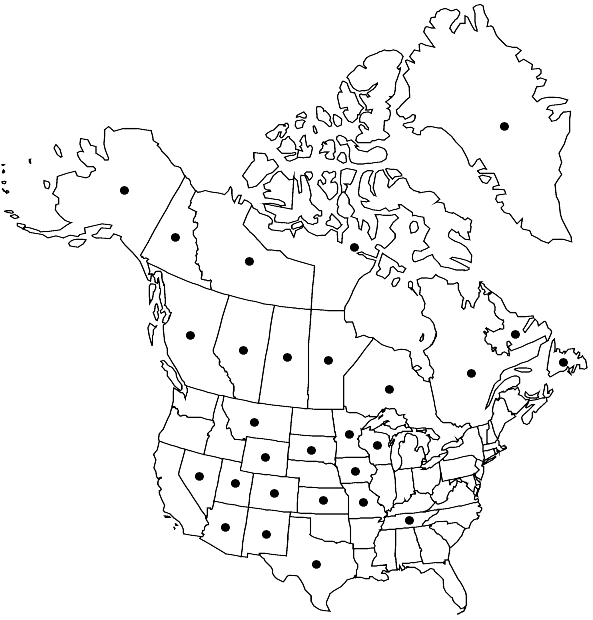Didymodon rigidulus var. gracilis
Cryptog. Bryol. Lichénol. 2: 393. 1981,.
Stem-leaves appressed to weakly spreading when dry, costa usually percurrent to short-excurrent as a rigid subula, short-lanceolate, seldom-lanceolate, base evenly broadened, ovate to elliptic or oblong, proximal cells shortrectangular, distal laminal cells usually papillose, quadrate, with quadrate lumens, occasionally 2-stratose on the margins in patches; gemmae often present in distal leaf-axils. Peristome teeth short and straight to long and twisted.
Phenology: Capsules mature spring–winter.
Habitat: Basalt, calcareous outcrops and ledges, gravel, soil, silt, frostboil, tundra, along roads and paths
Elevation: low to high elevations (0-3000 m)
Distribution

Greenland, Alta., B.C., Man., Nfld. and Labr., N.W.T., Nunavut, Ont., Que., Sask., Yukon, Alaska, Ariz., Colo., Iowa, Kans., Minn., Mo., Mont., Nev., N.Mex., S.Dak., Tenn., Tex., Utah, Wis., Wyo., Mexico, Central America, South America, Europe, Asia (Siberia), Africa, Atlantic Islands (Iceland)
Discussion
Variety gracilis may sometimes have gemmae and the distal lamina is occasionally 2-stratose in patches, but it differs from var. rigidulus most clearly in its the short- to long-lanceolate leaves. The distal laminal cells are commonly papillose, and their lumens are oval or rounded-quadrate. Because of intergradation, some collections must be assigned to this variety only on the basis of a majority of the characters given in the key. Although leaves in this variety are short in dry habitats, associated with fragile stems, leaf length in collections from moist environments is generally longer. The small distal laminal cells, broad costa to 6 cells in width at mid leaf, and the strong stem central strand serve to distinguish this taxon from Didymodon asperifolius.
Selected References
None.
Lower Taxa
"um" is not declared as a valid unit of measurement for this property."um" is not declared as a valid unit of measurement for this property.